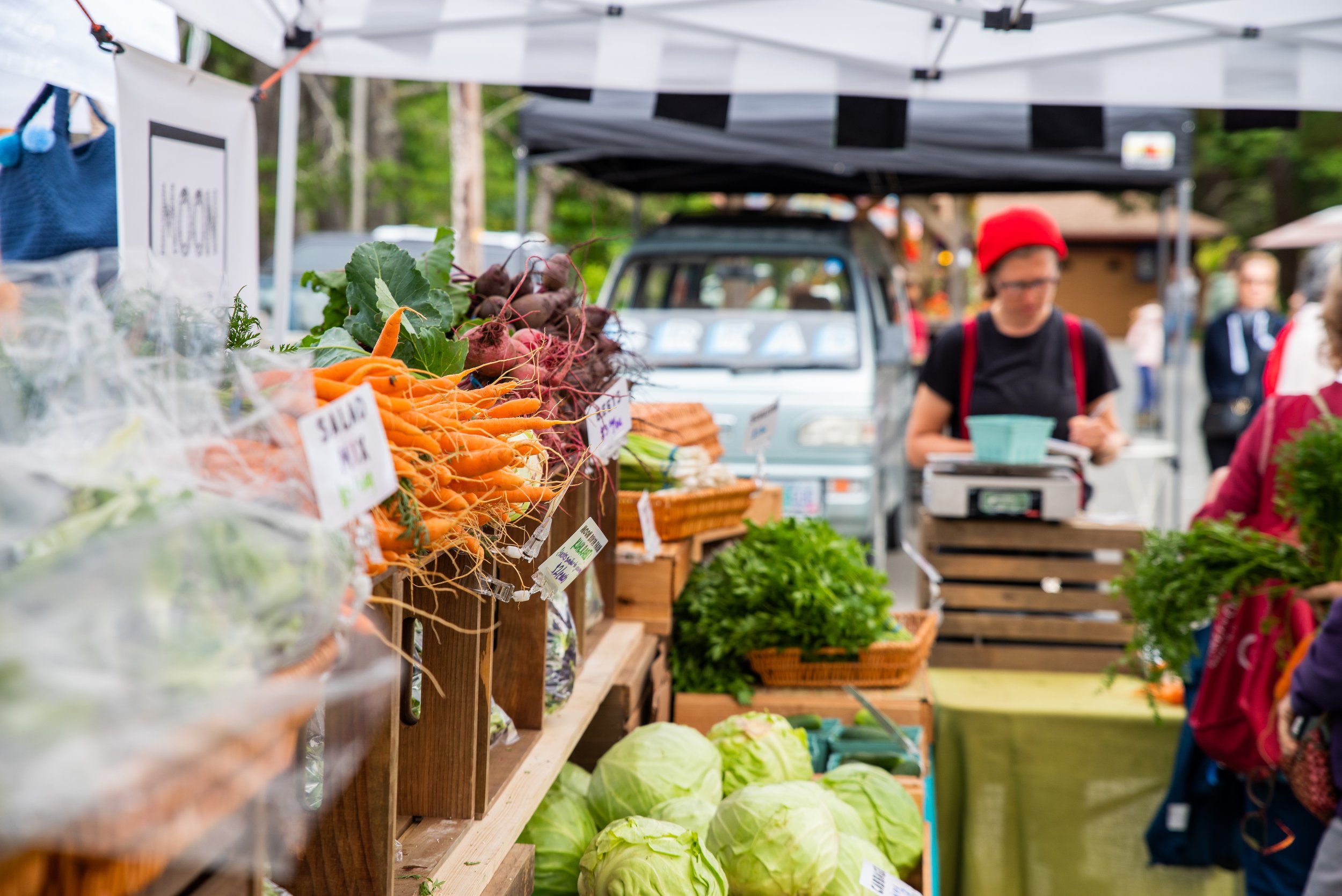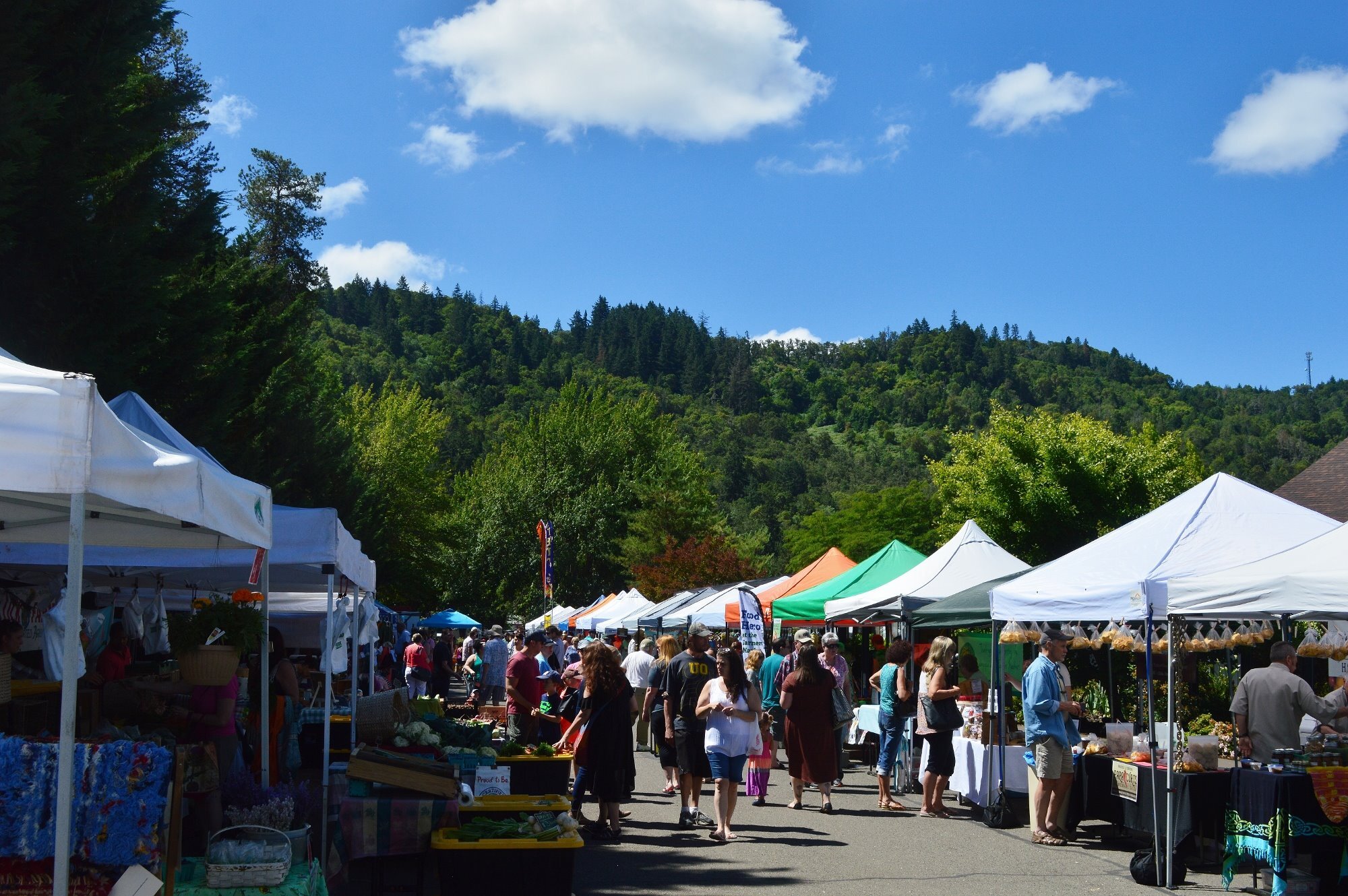Make it stand out
Farmers Market Data
Surveying for Insights
OFMA serves as the primary gathering place for quantitative (numbers) and qualitative (stories) data on the state of farmers markets in Oregon. This data allows us to understand what markets are dealing with across the state, how they are recovering from the pandemic, and what resources we can work for in our advocacy.
Our annual farmers market survey answers the three big questions we’re asked: how many farmers markets, vendors, and customers there are in Oregon.
We also dig deeper into the experiences of operating farmers markets exploring essential information like typical stall fees, SNAP dollars spent at markets, employment and wage statistics, anti-racism practices and market budgets and fundraising.
2023 Market Metrics
The 2023 Oregon Farmers Market Census surveyed 88 of the state’s 133 market organizations and captured data on vendor participation, customer visits, and sales using responses from market staff and estimates for non-responding markets. OFMA analyzed these inputs and supplemented gaps with estimates to provide a comprehensive view of statewide trends and comparisons to previous years.
-
88 market organizations took the census.
Including markets that didn’t take the census, there are:
133 market organizations in Oregon
157 market locations
Most farmers market organizations are operating only one market at a time. 14 organizations operate more than one market in either different locations or at different times of the week.
Compared to previous years:
2019: 106 Market orgs, operating at 127 physical locations.
2020: 101 Market orgs, operating at 123 physical locations. (+15 orgs temp closed for COVID)
2021: 113 Market orgs, operating at 136 locations
2022: 117 Market orgs, operating at 140 locations
-
OFMA estimates there are 7,329 businesses that attended a farmers market at least once in 2023. (This total double counts some businesses, since some vendors attend multiple markets.)
75% of responding markets said their vendor numbers stayed the same or increased in 2023 compared to 2022. 16% said they decreased.
Compared to previous years:
2019: 6,700 businesses
2020: 4,700 businesses
2021: 5,900 businesses
2022: 6,427 businesses
-
On average, markets in Oregon have 27 vendors on any one day. The median is 17 vendors.
-
OFMA estimates 4.1M visits were made to markets in 2023.
Compared to previous years:
2019: 4.2M visits
2020: 2.2M visits
2021: 3.4M visits
2022: 3.5M visits
-
OFMA estimates vendor sales in 2023 were $61,033,948.
Many markets do not collect information about how much money their vendors are making. All the same, we try to get an estimate.
To do this, we ask markets to give us a number, and then tell us how they arrived at it. It falls into 3 categories: based on weekly data, based on a sample of weeks, or a guess.
When we add up the figures markets gave us we take into account how accurate the data is. We also add in our own guess from the non-responding markets based on how many vendors we guess they have.
24 market organizations who took the census are collecting sales data from their vendors on a daily basis.
Another 12 estimated their season totals from a sampling of days or using token sales totals. 97 markets made a best guess or OFMA guessed for them.
Compared to previous years:
2019: $69M
2020: $34M
2021: $55M
2022: $55M
-
SNAP: 102 market locations offered SNAP. Combining data from Farmers Market Fund and the OFMA census, OFMA estimates $2,065,046 was distributed in SNAP at Oregon’s farmers markets in 2023.
DUFB: 92 market locations offered DUFB. Farmers Market Fund reports that $1,611,751 in DUFB was distributed at Oregon’s farmers markets in 2023.
Farm Direct: 96 market locations had vendors who could accept Farm Direct checks. Through this program, $2M was paid to farms in 2023.




